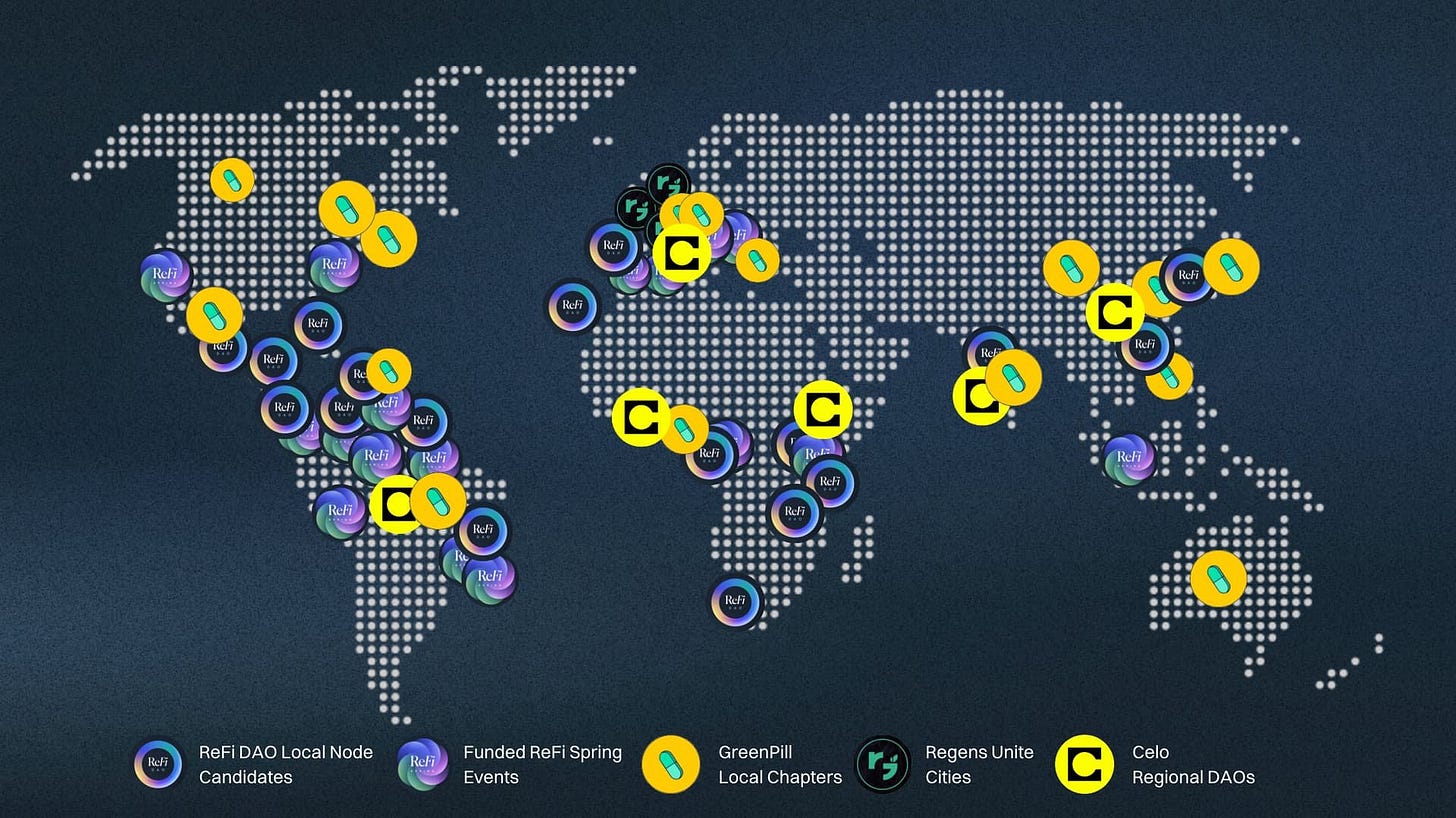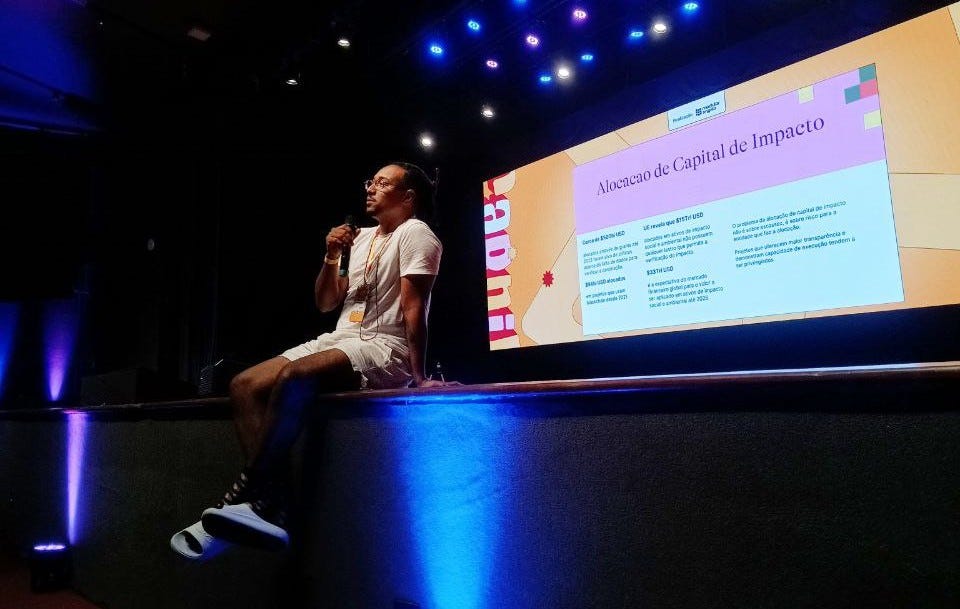Why is Celo the ideal blockchain for expansion in Brazil?
Lightweight technology, real-world impact, and global partnerships that make local sense.
Gm Builders!
If you’ve been following the rise of decentralized technologies with a grounded and thoughtful perspective, you’ve probably heard of Celo. But if you haven’t had the chance to dive deeper yet, now is a great time to understand why this blockchain is catching the attention of those who believe in innovation with real-world impact.
Celo is a Layer 2 within the Ethereum ecosystem, but with a vision and motivation quite different from other "common" networks.
Celo wasn’t created to compete on transaction speed or chase financial hype. It was born from a greater ambition: to make Web3 accessible, regenerative, and genuinely useful in the lives of everyday people—especially in the Global South.
While many networks aim to scale promises, Celo chose to scale purpose.
So, what is Celo, really?
Technically speaking, Celo is a Layer 2 blockchain, part of the Superchain — the interoperable ecosystem of L2s built on the OP Stack — and it was designed with a mobile-first experience in mind. This means it runs efficiently even on basic smartphones with limited memory and low internet connectivity.
In addition, Celo has been operating as a carbon-negative network since 2020:
Precise measurement of emissions from each block
Automatic allocation of a portion of gas fees to fund verified carbon credits
Support for reforestation and soil regeneration projects in Global South countries — including Brazil
But more important than the technology is what it enables:
One-click digital wallet creation
Use of local stablecoins like cREAL (pegged to the Brazilian real) or cUSD (pegged to the US dollar)
Participation in DeFi protocols without needing banks, intermediaries, or abusive fees
Celo is also a global reference in ReFi — Regenerative Finance, a movement that uses crypto to fund reforestation, local currencies, community DAOs, circular economy initiatives, and high-impact, territory-based solutions.
Why is Brazil fertile ground for this?
We have more cell phones than people.
We adopt new technologies quickly (just look at the success of PIX and QR codes).
4.6 million people are still outside the traditional financial system (Instituto Locomotiva, 2023).
Communities are already creating their own currencies, local DAOs, and credit circuits.
In other words, Celo naturally connects with the real Brazil — remote communities, rural areas, urban outskirts, and grassroots collectives already building solutions with what they have.
Discover what Celo has been building:
MiniPay: Web3 in the palm of your hand — no app download needed
One of Celo’s most powerful innovations is MiniPay, a digital wallet embedded directly in the Opera Mini browser (used by millions in regions with low connectivity).
With MiniPay, anyone can send and receive crypto using just a phone number — no need to understand blockchain, download heavy apps, or rely on technical help.
The experience feels like PIX: simple, direct, and familiar — but with global reach and no dependence on banks.
Real cases: where Celo is already making a difference
While many are still debating the “future of Web3,” Celo is already operating in the present and generating concrete impact across several countries:
🇨🇴 Colombia: Basic income distribution to migrants (UNHCR + ImpactMarket) using cUSD and the Valora wallet.
🇰🇪 Kenya: Development of community currencies with Grassroots Economics, fostering circular economies.
🇳🇬 Nigeria: MiniPay integrated with SMS payments via Kotani Pay and digital literacy initiatives.
🌍 Deutsche Telekom Partnership: Support for Celo’s mobile network infrastructure and decentralized validation.
What has Celo achieved so far in Brazil?
We already have strong seeds planted here as well:
Use of cREAL in wallets like Valora;
Carbon credit tokenization projects by rural communities;
Creation of digital social currencies in urban outskirts;
Onboarding of over 1,000 students, with 800 certificates issued on-chain;
Activation of Valora wallets by more than 800 students through the Blockchain in Schools program;
To build the future: Recently, CeLatam published a proposal in the Celo DAO forum about launching an accelerator and developing MiniApps in the Chapada Diamantina region in Bahia.
A blockchain with purpose
Celo doesn’t want to be just another network in the market cap race. It aims to be social and environmental infrastructure where small farmers, local shopkeepers, young entrepreneurs, and climate activists can build, collaborate, and thrive without relying on distant corporations.
Next steps for Celo in Brazil
If we want this transformation to grow here, the path is clear:
Strengthen local communities that are already creating solutions;
Support projects that tokenize impact (such as carbon credits, social currencies, community energy);
Integrate with public policies, support networks, and educational initiatives;
Spread Web3 knowledge in a clear, accessible way without technical jargon.
The infrastructure is ready and the technology is robust, but real change will depend on something greater: building bridges, distributing power, and acting alongside those who are already making it happen.
Possibilities for the future
Celo’s future in Brazil won’t come from the top down; it will be born from the edges: from commerce, rural areas, community leaders, and grassroots.
If it’s going to grow, let it grow with regeneration and inclusion. Otherwise, it simply won’t grow at all.
If this text moved you in any way, please share it.
These stories need to be heard.
Thank you for reflecting together!






